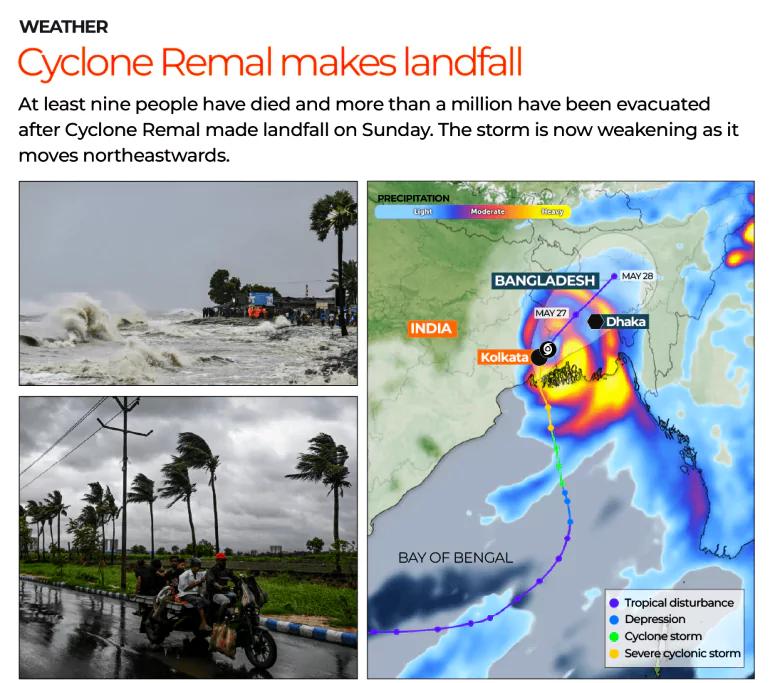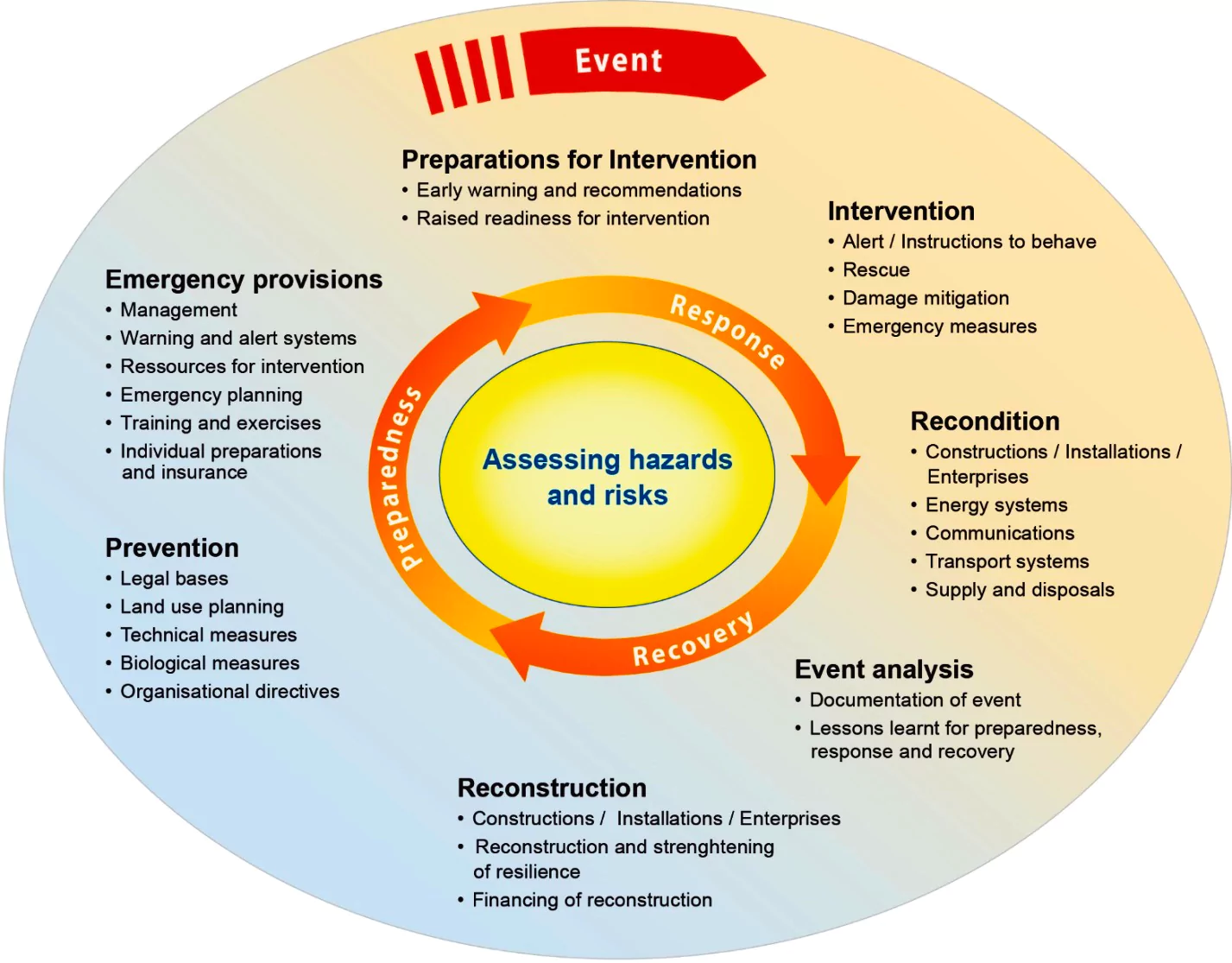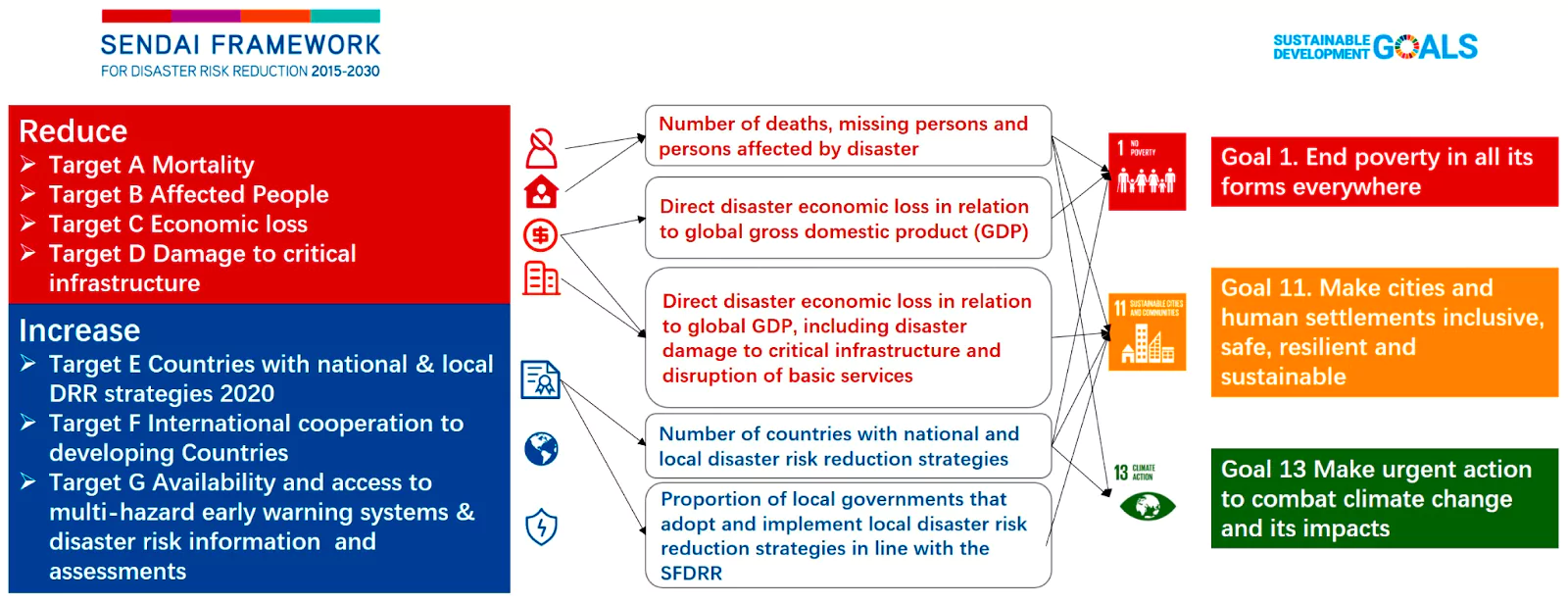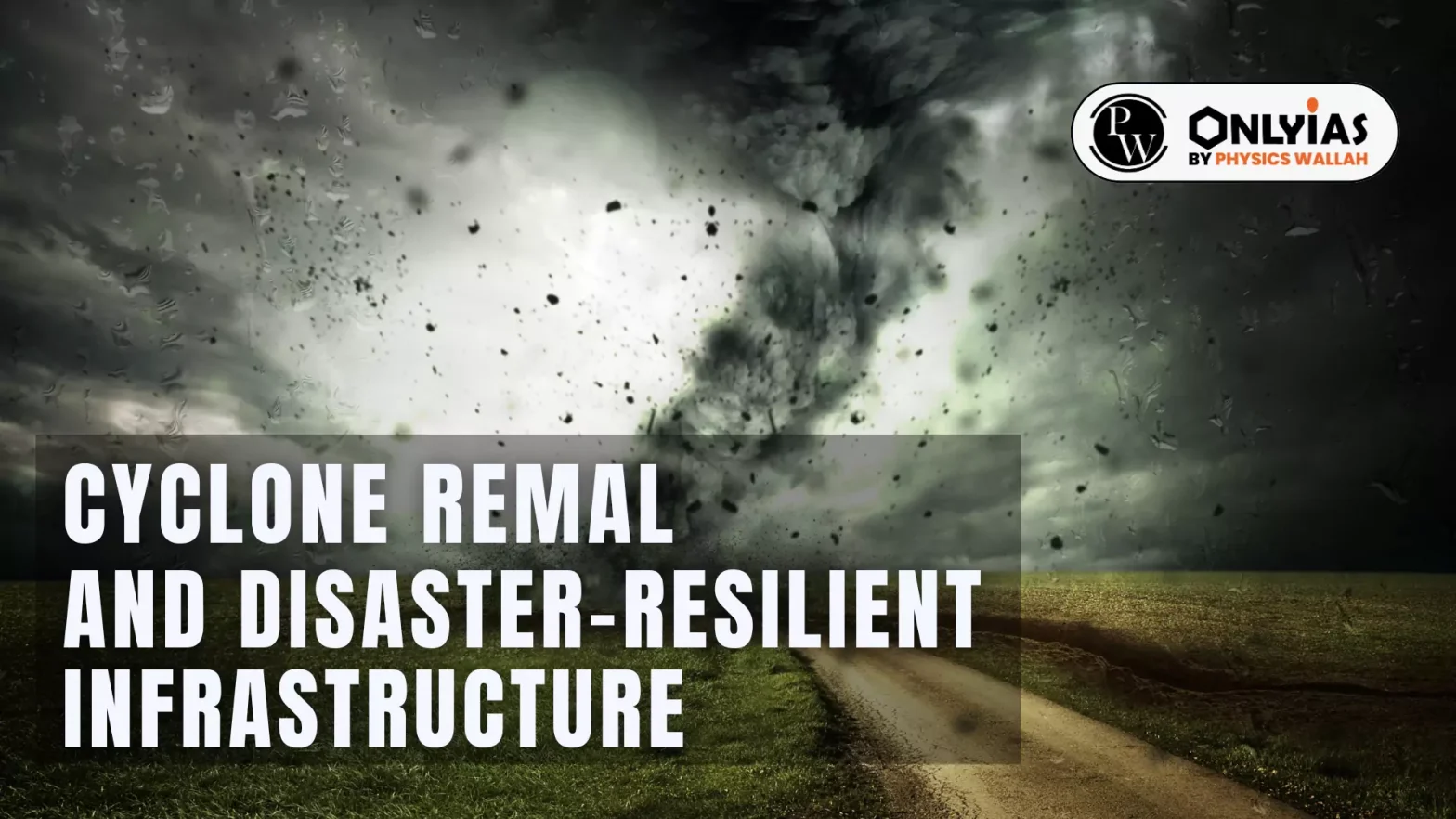The aftermath of cyclone Remal causing extensive damage in the form of landslides and flash floods in the North- East and West Bengal Region, upgradation and overhauling the disaster management system is the need of the hour.
Cyclone Remal

Remal means “sand” in Arabic and was named by Oman
- Landfall: The storm made landfall near Mongla port, Bangladesh and the adjoining Sagar Islands in India’s West Bengal state with a wind speed of up to 135kmph (84mph)
- Remal was the first cyclone to hit the Bay of Bengal this year in advance of the June-September monsoon season.
- Cyclone Remal advanced to a severe cyclonic storm from low pressure in bay of bengal in just three days.
- Impact:
- Death toll: Official Death Toll across the four northeastern States rose to 38
Enroll now for UPSC Online Course
Coalition for Disaster Resilient Infrastructure
- Establishment: CDRI was established in 2019 during the United Nations Climate Action Summit in New York.
- It is India’s second major global initiative after the International Solar Alliance (ISA).
- Secretariat office: It is in New Delhi.
- CDRI is a global partnership of National Governments, UN agencies and programmes, multilateral development banks and financing mechanisms, the private sector, academic and knowledge institutions.
- Aim: To promote the resilience of infrastructure systems to climate and disaster risks, thereby ensuring sustainable development
- Members: 39 countries and 7 organizations.
- Initiatives:
- Infrastructure for Resilient Island States (IRIS): It will promote resilient, sustainable and inclusive infrastructure in Small Island Developing States (SIDS)
- Launched: The initiative was launched by the Prime Ministers of India, Australia, Fiji, Jamaica, Mauritius and the UK at the 26th session of the Conference of the Parties (COP-26) to UNFCCC in 2021 at Glasgow.
|
-
- Landslides: 29 bodies are retrieved from several landslide-hit locations like a stone quarry site at Methum in and around Mizoram’s capital AizawlFlash floods: Brahmaputra and other major rivers in the region flowed close to the danger mark causing flash floods and breach of embankment walls in the entire region.
Impact of Disasters on Infrastructure
- Economic loss: Disasters are causing average losses of $732 billion-$845 billion each year to infrastructure and buildings, equal to 14% of GDP growth in 2022, as per estimates by the Coalition for Disaster Resilient Infrastructure (CDRI).
- Prediction: With a temperature rise of 3-4 degrees Celsius, average annual losses could rise by 12-33% in low and middle-income countries, including by nearly a quarter across South Asia and sub-Saharan Africa.
 Disruption: Disasters disrupted the provision of over 363,184 basic services in 44 reporting countries, including health and educational services in In 2020 and 2021 alone as per the Sendai Framework Monitor, 2022
Disruption: Disasters disrupted the provision of over 363,184 basic services in 44 reporting countries, including health and educational services in In 2020 and 2021 alone as per the Sendai Framework Monitor, 2022- Critical Infrastructure: Roads and railways, telecommunications, and power and energy together account for about 80% of the total annual losses.
- On low and middle income economy: About 30% of the annual infrastructure losses ie. around $280 billion, due to extreme climate events and disasters are borne by low and middle-income nations.
- The highest share of losses is seen in South Asia at 0.42% of GDP per year and Latin America and the Caribbean with 0.22%
Disaster Resilient Infrastructure
Resilient infrastructure are the systems and structures that are built to endure, adapt, and quickly recover from shocks and stresses. These stressors could include natural disasters, climate impacts, technological failures, or other human-induced emergencies.
Goal of Disaster Resilient Infrastructure
- It is to ensure minimal disruptions to essential services such as critical Infrastructure facilities, public communal facilities, transit systems, telecommunications, and power systems to ensure the safety and well-being of human users and occupants.
Characteristics of a Disaster Resilient Community
- Prior preparedness: A disaster resilient community is one which is well-suited to respond to a crisis that might occur like a devastating flood or tornado.
- It means, the local buildings are built with solid foundation materials, flood zones have storm drains and proper sewage systems, and that critical IT infrastructure is secured through the cloud.
- Knowledgeable and healthy: It has the ability to assess, manage and monitor its risks. It can learn new skills and build on past experiences.
- Organised: It has the capacity to identify problems, establish priorities and act
- Infrastructure and services: It has strong housing, transport, power, water and sanitation systems. It has the ability to maintain, repair and renovate them.
|
Principles for Resilient Infrastructure
- General Awareness: Assist in raising awareness and setting common basic understanding of what “resilient infrastructure” constitutes.
- Incorporate as a core value: Form the basis for planning and implementation of infrastructure projects that take resilience as a core value.
- Set Standards: Raise engineering designs based on available and reliable data so parameters of safety and disaster risk mitigation are in place on new and retrofitting projects.
- Set out the desired outcomes of national infrastructure systems to establish resilience o f critical services.
- Assist the public and private sectors in making risk-informed policy and investment decisions.
Enroll now for UPSC Online Classes
Disaster-resilient infrastructure examples
- Earthquake-resistant structures: It ensures the structures can absorb and distribute seismic forces without collapse. Earthquake-resistant building design encompasses ‘redundancy’ (providing multiple load paths), ductility (allowing part of the structure to deform without breaking), and base isolation (allowing the base of the structure to move separately from the remainder).
- Tsunami and flood-resilient infrastructure: Strategies include elevating foundations, structural reinforcement, drainage systems, seawalls, floodproof doors, breakaway walls, open ground floors (allowing water to flow freely), and permeable pavements.
- Temperature-resistant infrastructure: It is designed to withstand extreme fluctuations in temperature.
- Example: To integrate green roofs, thermal insulation, strategic ventilation, and flexible joints.
- Cyclone and wind-resistant construction: To utilize aerodynamic designs, secure roofing materials, impact-resistant doors and windows, wind-resistant cladding, etc
|
Need of Disaster Resilient Infrastructure
- Disaster Resilient infrastructures importance is increasingly recognised as the effects of industrial technology, unpredictable weather patterns, global warming, and dense urbanisation pose new and complex challenges.
- Intensified Multi-Hazard Disasters: Multi hazard disasters are the events whereby one disaster triggers another, or a series of other disasters, the cascading impacts of which result in a destruction that is much higher in magnitude.
- Example: Heavy rainfall leads to breach of glacial lakes and landslides in hilly areas which results in flash floods downstream. Or, extreme heatwave triggering largescale forest fires.
- Urban densities: As more and more population shifts towards the urban centres, the increased population and built environment densities calls for safe Infrastructure.
- Reduce Human Misery: An emphasis on disaster resilience is vital because it reduces the potential loss of life, injury, and damage caused by multiple hazards.
- Build Recovery: Disaster Resilient Infrastructure strengthens the capacity of communities and societies to manage and recover from disasters, contributing to long-term sustainability, durability, and economic stability.
- Adaptation: Disaster Resilient Infrastructure is an adaptation strategy to reduce the impacts of disasters which are Increasing in frequency and severity by saving life and property
- Global interconnectedness: Disasters in one region can have cascading effects worldwide, Therefore, there is a need for collective efforts as a collective effort towards resilient infrastructure globally strengthens everyone’s preparedness.
- Protecting the most vulnerable: Investing in resilient infrastructure safeguards the vulnerable communities the most as they are the most at risk during times of a disaster.
A Disaster Resilient Design
- A Resilient design encompassess careful planning of the following:
- Careful placement of infrastructure and emergency services: To distribute critical services evenly across a city to avoid the risk of total system failure if one area become damaged or inaccessible.
- Hospitals, fire stations, water pumps and police stations should be positioned where they are least likely to be cut off in a disaster.
- Land-use planning: Disaster zoning of Infrastucture is required to be inculcated in city planning to restrict certain development activities in locations where risks are deemed to be higher.
- Public assembly points: Accessible, recognisable, and properly spaced assembly point need to be built for communities to gather and coordinate the recovery effort.
- Alarms and public announcement and Early Warning systems
United Nations Office for Disaster Risk Reduction (UNDRR)
UNDRR coordinates international efforts in disaster risk reduction and it reports on the implementation of the Sendai Framework for Disaster Risk Reduction.
- It convenes the biennial Global Platform on Disaster Risk Reduction.
- Headquarters: Geneva, Switzerland
|
-
- Emergency lighting, directional signage and symbols: Placed in key locations to guide occupants towards exits and to ensure safety during power outages.
- Fire exits and stairwells: It should be clearly marked, unobstructed, and positioned in easily accessible areas to facilitate quick evacuation in case of emergencies.
- Example: The heat waves in North India has resulted in many cases of fire emergencies due to malfunctioning cooling systems like ACs.
- Utility interfaces or control panels: Conveniently located for managing communication systems, water, gas, internet, and electricity.
Enroll now for UPSC Online Course
Disaster Resilient Infrastructure Initiatives
- Disaster Resilient Infrastructure calls for a collaboration between all governance tiers, academia, private enterprises, infrastructure experts and local communities.
- Establishment of Coalition for Disaster Resilient Infrastructure (CDRI): India hosted the 6th conference of CDRI recently.
- India Cooling Action Plan: To promote passive cooling in buildings, Bureau of Energy Efficiency (BEE) has brought out the Energy Conservation Building Code (ECBC) for all large commercial buildings and Eco-Niwas Samhita (ECBC-R) for the residential buildings.
- Support to Monitoring and Implementation of the Sendai Framework for DRR (SFDRR): The Sendai Framework for Disaster Risk Reduction (2015-2030) identifies investing in Disaster Risk Reduction (DRR) for resilience and to “build back better” in reconstruction as priorities.
- India is one of the first to create a National Disaster Management Plan based on the Sendai Framework for Disaster Risk Reduction.
- The Indian Tsunami Early Warning System (ITEWS): It was established in 2007 and is based at & operated by INCOIS, Hyderabad.
- ITEWS comprises a real-time network of seismic stations, tide gauges and a 24X7 operational tsunami warning centre to detect tsunami created earthquakes, to monitor tsunamis and to provide timely advisories to vulnerable communities.

Global Best Practice
- China: The country has developed “sponge cities” by creating parks in and around cities that have water storage tunnels, rain gardens, wetlands and bioswales that aid drainage to prevent flooding and serve as water reserves for dry spells.
- Malaysia: It uses multi-storey smart tunnels to regulate traffic and safeguard against flash floods.
- Guyana: A mangrove seawall in Guyana helps protect its low-lying areas against storm surges.
|
Existing Nature of Cities
Cities have often evolved organically without disaster-proofing in mind therefore, Implementing resilience measures, particularly within existing infrastructure, can be costly and time-consuming, requiring extensive planning and investment.
Coordination and Alignment
Coordinating resiliency efforts across different sectors, regions, and stakeholders requires effective communication, collaboration, and alignment of goals and strategies.
Financing problems
There is an estimated $106 trillion of untapped private capital worldwide but only 1.6% of that amount is invested in infrastructure today with low and middle-income nations attracting just a quarter of private infrastructure investment globally – mainly for non-renewable energy and transport.
Way Forward
- Risk Assessment: Regular infrastructure risk assessments are important to find vulnerabilities in critical sectors like transport, power, and telecommunications. These assessment should be followed by risk mitigation strategies, to protect against potential damages.
- Holistic Planning: An integrated approach to embed climate and disaster resilience into critical infrastructure planning amalgamating data analytics, focused investment, proactive policies, and stakeholder capacity building is needed.
- Enhance Disaster risk comprehension: Effective DRI necessitates the integration of data-driven infrastructure planning, risk-informed investments, and propagation of early warning system across diverse landscapes, powered by GIS mapping and innovative technologies.
- Capacity building: Through stakeholder engagement, capacity of communities across the diverse landscape needs to be amplified through regular consultation and workshops
- Improved Building bye-laws: The safety codes needs to incorporate the features of disaster-resistant buildings with simplified guidelines present in public domain.
- Demonstration centres: Rural areas should set up Building Technology Demonstration Centres and undertake demonstrative disaster constructions in severe hazard-prone areas.
Enroll now for UPSC Online Classes
Conclusion
Natural Disasters leading to displacement and devastation cannot be prevented, therefore the focus should be on ensuring the safety and security of communities and societies in future by adopting certain Adaptation measures. And one way to do that is to invest in Disaster Resilient Infrastructure to Build Back Better.
![]() 31 May 2024
31 May 2024


 Disruption: Disasters disrupted the provision of over 363,184 basic services in 44 reporting countries, including health and educational services in In 2020 and 2021 alone as per the Sendai Framework Monitor, 2022
Disruption: Disasters disrupted the provision of over 363,184 basic services in 44 reporting countries, including health and educational services in In 2020 and 2021 alone as per the Sendai Framework Monitor, 2022
